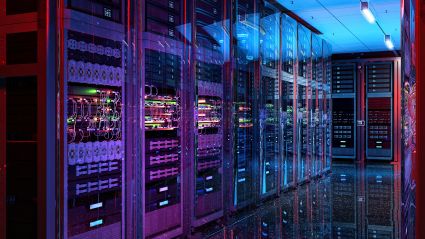
The world is at a turning point. Climate instability, economic disparity, and the rapid acceleration of AI and deep tech are converging, presenting both challenges and opportunities. Meeting this moment requires a fundamental shift in how we think, act, and collaborate.
The future of human flourishing cannot be built in silos. Solving our most pressing challenges demands cross-sector collaboration, guided by ethical and strategic use of advanced technologies. When industries, disciplines, and geographies unite—leveraging AI and deep tech as force multipliers—their combined impact far exceeds individual efforts.
By rethinking how we build, invest, and innovate together, we can move beyond fragmented problem-solving toward systemic transformation.
AI as a Catalyst for Cross-Sector Collaboration
Artificial intelligence is reshaping industries, yet its greatest potential lies in its ability to enhance human collaboration. AI-driven insights align strategies more effectively, anticipate long-term impact, and accelerate cross-sector solutions.
AI is enabling:
- Real-time systems thinking—AI simulations model cross-sector decisions, ensuring policies and business strategies prioritize long-term success over short-term gains.
- Radical transparency—AI and blockchain create verifiable accountability, tracking the real-world impact of policies, investments, and sustainability initiatives.
- New investment models—AI-powered analytics align private capital, government funding, and philanthropy to scale high-impact solutions more efficiently.
- Smarter decision-making—AI-driven data ecosystems help city planners, energy providers, and health organizations predict and respond to crises with precision and speed.
AI is not just a tool for efficiency—it is a platform for intelligent collaboration, ensuring solutions are built with a shared vision.
The challenges we face are complex, urgent, and deeply interconnected—but so are the opportunities.
Deep Tech as a Foundation for Systemic Change
Deep technologies—such as AI, quantum computing, synthetic biology, and energy breakthroughs—are unlocking solutions once thought impossible. To maximize their potential, deep tech must be integrated into ecosystems of cross-sector cooperation rather than isolated silos.
Examples of cross-sector innovation include:
- Operation Warp Speed—One of the most impactful public-private breakthroughs, this collaboration united government agencies, pharmaceutical companies, and AI-driven biotech platforms to fast-track COVID-19 vaccines. AI accelerated drug discovery, clinical trials, and logistics, reducing vaccine development from years to months—demonstrating how cross-sector collaboration saves lives.
- Health care and AI-driven biotech—Houston Methodist and Rice University’s Digital Health Institute merge AI, medical expertise, and engineering to enhance patient care, expand health-care access, and streamline hospital systems—a model for how medicine, technology, and academia can unite.
- Transforming scientific innovation into real-world impact—The Ellison Institute of Technology Oxford has committed over £100 million in partnership with the University of Oxford to fast-track commercialization of AI, biotech, and quantum breakthroughs, ensuring research translates into tangible change.
- AI and clean energy innovation—AI-driven smart grids are integrating into energy infrastructure, helping utilities, corporations, and governments transition to renewable energy more efficiently while ensuring power stability. These collaborations prove how AI and deep tech can scale climate solutions.
Cross-sector collaboration, leveraging deep tech innovations, continues to demonstrate the power of significant impact in our world.
Lessons from Systems Change
Working across sectors requires more than good intentions. It demands a shift in mindset and a commitment to systemic change. Three key lessons stand out:
- Adopt a “radical reciprocity” approach. True partnership means moving beyond extraction and competition to mutual empowerment. AI and data-sharing platforms can facilitate transparency, ensuring that knowledge, resources, and breakthroughs are equitably distributed.
- Build new collaboration infrastructure. Just as the internet transformed access to information, we must now build AI-powered platforms that connect policymakers, researchers, investors, and entrepreneurs in real-time problem-solving ecosystems.
- Center humanity in innovation. The future of flourishing is not just about advancing technology—it’s about advancing wisdom. Ethical frameworks, human-centered design, and inclusive decision-making must guide AI and deep tech for societal benefit.
A Call to Collective Leadership
The challenges we face are complex, urgent, and deeply interconnected—but so are the opportunities.
We have the tools, intelligence, and capital to create a world that works for all. What we need now is the collective will to collaborate across industries, nations, and ideologies.
The future belongs to those who choose to collaborate boldly. This is not about incremental progress. It is about redefining how we innovate, invest, and lead together in this new era of AI and deep tech.
Because when we work across sectors, we don’t just solve problems: We create the conditions for all of humanity and our planet to thrive.






















